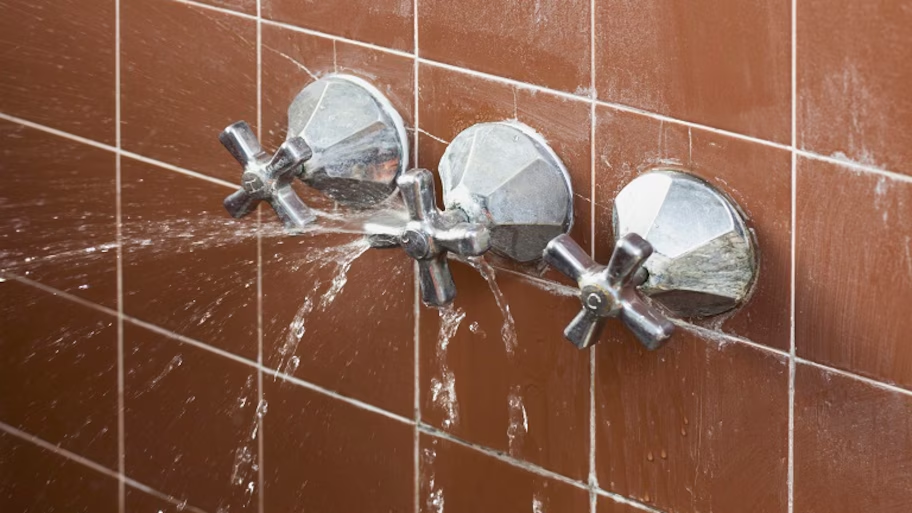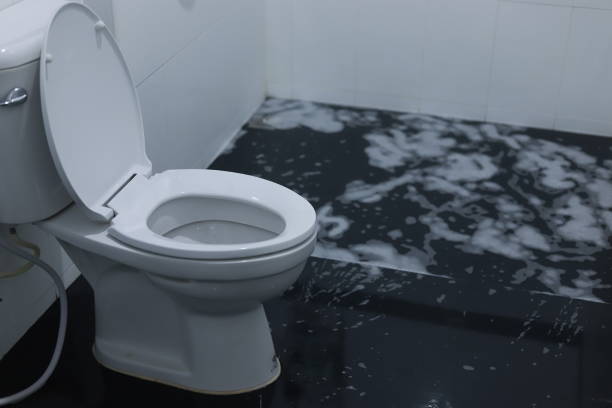Aspects That Lead to Bathroom Water Damage
Aspects That Lead to Bathroom Water Damage
Blog Article
The content in the next paragraphs on the subject of How to Repair and Prevent Bathroom Water Damage? is extremely remarkable. You should take a peek.

Water damage typically occurs in the restroom because of the water made use of daily. Often, the damage could be a little mold from the shower. Various other times, it's large damage on your flooring. Whatever it is, it is constantly great to know the cause and also avoid it prior to it happens.
This overview will certainly undergo a few of the common reasons for water damage in the bathroom. We will certainly additionally examine what you can do to avoid these causes from damaging your bathroom. Allow's dive in.
5 Common Causes of Water Damage in Shower Rooms
These are the usual factors you would have water damage in your restrooms as well as just how you can detect them:
Ruptured or Dripping Pipelines
There are several pipelines lugging water to various parts of your washroom. Some pipelines take water to the commode, the sink, the faucets, the shower, and also numerous other places. They crisscross the small location of the bathroom.
Every now and then, these pipelines might get rustic as well as ruptured. Other times, human action could cause them to leak. When this happens, you'll find water in the corners of your bathroom or on the wall.
To detect this, look out for gurgling walls, molds, or mildew. Call a specialist emergency plumbing professional to repair this when it occurs.
Fractures in your wall surface floor tilesv
Washroom wall surface tiles have been specifically created for that function. They secure the wall from wetness from individuals taking showers. However, they are not unbreakable.
In some cases, your washroom wall surface tiles crack and enable some wetness to leak right into the wall surface. This might potentially ruin the wall surface if you don't take any type of action. If you discover a crack on your wall tiles, repair it instantly. Don't wait up until it ruins your wall.
Overflowing commodes and also sinks
As human beings, sometimes we make blunders that might cause some water damage in the restroom. For example, leaving your sink tap on could create overruning and damage to various other parts of the bathroom with wetness.
Also, a faulty toilet can cause overruning. As an example, a busted commode handle or various other parts of the cistern. When this takes place, it might harm the floor.
As soon as you observe an overflowing sink or toilet, call a plumbing to help manage it right away.
Roof covering Leakages
Occasionally, the trouble of water damage to the washroom may not come from the bathroom. For example, a roof covering leak might trigger damages to the bathroom ceiling. You can identify the damage done by taking a look at the water spots on the ceiling.
If you discover water stains on your ceiling, inspect the roof covering to see if it's harmed. After that, call an expert to help fix the concern.
Excess Moisture
It's trendy to have that lengthy shower and splash water while you dance around and also imitate you're executing, yet occasionally these acts can create water damage to your shower room.
Splashing water around can cause water to head to edges as well as form molds. View exactly how you spread excess moisture around, and also when you do it, clean it up to prevent damage.
Conclusion
Water damage to your washroom can be aggravating. Nevertheless, you can handle it if you stop some of the causes discussed in this overview. Call an expert emergency plumber if you observe any type of serious damage.
Common Causes of Water Damage in a Bathroom
Water damage can appear virtually anywhere in your home, but bathrooms and basements are the two most common areas. It’s easier to spot causes and signs of water damage in an unfinished basement, but that doesn’t mean it’s any less severe to have water damage occur in your bathroom.
Spotting Signs of Bathroom Water Damage
The bathroom is probably the most common place where you’ll use water in your home. Because of this, there’s a relatively high risk of sustaining water damage. The longer water damage goes untreated, the worse it can get. Therefore, you need to know what signs to look for and deal with any damage as soon as possible.
There are often items like rugs, bottles, towels, and so on crammed in every corner of the typical bathroom, which can trap moisture and hide budding problems. But what usually causes the most water damage in a bathroom? How can you spot it, especially with so many items in the way? This article addresses several common ways to notice, prevent, or fix bathroom water damage.
A Recurring or Persistent Musty Odor
Wherever there’s water damage, you almost always find small spots of mold, or even a full-blown infestation. When you leave mold to thrive and grow, it creates a stinking, musty odor that’s pretty hard to miss. Don’t leave musty smells unaddressed—try to find the source so that you can have it repaired before more damage occurs.
Damaged Grout or Caulk
When these sealing agents fail, virtually nothing prevents water from seeping past the barrier, causing water damage and mold growth underneath wall and flooring tiles. Damaged showerheads, spigots, grout, or caulking, combined with excessive moisture, create the perfect environment for mold to thrive.
Loose Tiles or Spongy Floors
Moldy and water-damaged walls make it more difficult for tiles to stay in place, which can cause them to become loose. In addition, persistent moisture on a bathroom floor can result in water damage to the subflooring layer, causing it to degrade, lose integrity, and feel spongy.
Stubborn Growth
If there’s visible mold in your bathroom that you’ve removed more than once, the most likely reason it keeps coming back is a deeper infestation in the walls or floors. It’s critical to deal with this problem immediately to prevent further damage and new or worsening health issues.
https://advantaclean.com/blog/common-causes-of-water-damage-in-a-bathroom/

Common Causes of Water Damage in a Bathroom
Water damage can appear virtually anywhere in your home, but bathrooms and basements are the two most common areas. It’s easier to spot causes and signs of water damage in an unfinished basement, but that doesn’t mean it’s any less severe to have water damage occur in your bathroom.
Spotting Signs of Bathroom Water Damage
The bathroom is probably the most common place where you’ll use water in your home. Because of this, there’s a relatively high risk of sustaining water damage. The longer water damage goes untreated, the worse it can get. Therefore, you need to know what signs to look for and deal with any damage as soon as possible.
There are often items like rugs, bottles, towels, and so on crammed in every corner of the typical bathroom, which can trap moisture and hide budding problems. But what usually causes the most water damage in a bathroom? How can you spot it, especially with so many items in the way? This article addresses several common ways to notice, prevent, or fix bathroom water damage.
A Recurring or Persistent Musty Odor
Wherever there’s water damage, you almost always find small spots of mold, or even a full-blown infestation. When you leave mold to thrive and grow, it creates a stinking, musty odor that’s pretty hard to miss. Don’t leave musty smells unaddressed—try to find the source so that you can have it repaired before more damage occurs.
Damaged Grout or Caulk
When these sealing agents fail, virtually nothing prevents water from seeping past the barrier, causing water damage and mold growth underneath wall and flooring tiles. Damaged showerheads, spigots, grout, or caulking, combined with excessive moisture, create the perfect environment for mold to thrive.
Loose Tiles or Spongy Floors
Moldy and water-damaged walls make it more difficult for tiles to stay in place, which can cause them to become loose. In addition, persistent moisture on a bathroom floor can result in water damage to the subflooring layer, causing it to degrade, lose integrity, and feel spongy.
Stubborn Growth
If there’s visible mold in your bathroom that you’ve removed more than once, the most likely reason it keeps coming back is a deeper infestation in the walls or floors. It’s critical to deal with this problem immediately to prevent further damage and new or worsening health issues.
https://advantaclean.com/blog/common-causes-of-water-damage-in-a-bathroom/
Do you really like reading up on How to Repair and Prevent Bathroom Water Damage?? Give feedback further down. We will be glad to know your responses about this blog entry. In hopes to see you back again in the future. Sharing is caring. Helping people is fun. Bless you for your time. Visit again soon.
Hot water gone? Call. Report this page